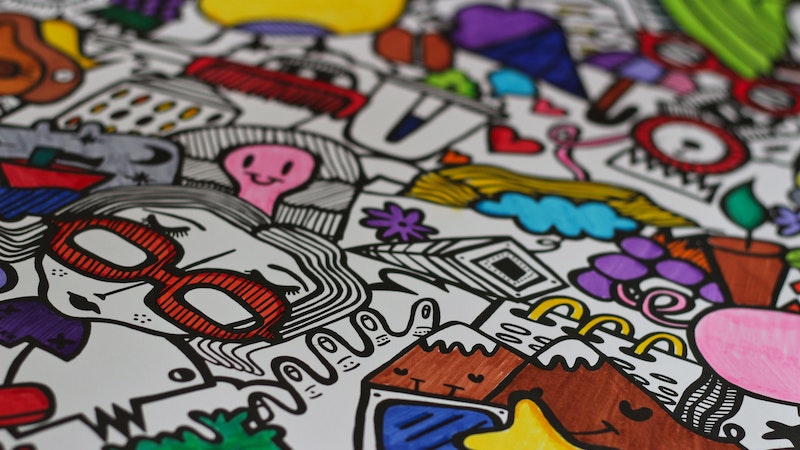Doodling for Relaxation
Episode #6 of the course Creative mindfulness: Ten ways to chill out and enjoy creativity by K.C. Finn
In Lesson 2, we had a free-spirited exploration into the world of art, where we made marks to use our bodies for physical expression. Now, we’ll return to the art-based methodology with a more focused activity that brings art to the emotional mind too.
The Theory
Do you remember those times in school where you got bored and doodled? Whether it was cartoons, patterns, or just endless spirals in the back of an exercise book, many of us can recall times where we wanted something to do with our hands because our minds were not engaged in the lesson we were supposed to be listening to. This is a normal response to boredom, and boredom can quickly lead to low feelings for those of us who need a higher level of positive influence in our lives.
Today’s exercise takes a twofold approach to relaxation: lifting those who are experiencing boredom into a peaceful place where they have something relaxing to do and giving those who are experiencing physical anxiety a chance to put their energy to use. Both these processes require the exercise to give the mind something new and calming to focus on until those other unproductive emotions have passed. My twist on this usually meditative process is to incorporate a focused form of art, but it’s one that is easy to accomplish at any given time or place.
The Activity
It’s always handy to keep supplies with you for this one, so you can break out a doodle exercise whenever you need a time-out from worries or tension. Any kind of notepad or scrap paper will do, along with a small case of colored pencils, pens, or crayons. Color is key here because it plays a big part in mood and emotion, so do make sure you have a selection at hand. As for your focus, you can bring something from home or look at the world around you at that moment.
We begin with a focal point. It’s handy to have an image or object to look at, just for something that can bring you ideas and prevent your mind from wandering back to worries and the like. It could be an object on your desk at work, a photograph from your phone, or an image in a book or magazine. Whatever the object, spend a few moments observing and noticing details about it before you begin. Then, base your doodle on something about the object or image, but do not draw it exactly as it is. For example, if your image is of a glass, you might start doodling about cocktails or windows. Keep it loose, change your colors often, and always go back to the image when you’re stuck.
Reflection
You can do this exercise for a couple of minutes or a couple of hours, depending on how you feel about art and the marks that you can make. The central importance of this exercise is to have a loose focus at hand from which your creativity can spark. They say that a picture paints a thousand words, so a focus can spark a thousand ideas, and it’s in the outpouring of those ideas that you can release clutter from busy minds and fill empty minds with fresh new thoughts. This replacement of ideas helps filter out the less important worries, and it should leave you with only the concerns that are genuine and urgent, thus enabling you to feel more in control about what really matters in your busy day.
Lesson 7 takes a look at that world out there and reduces it to a much smaller scale, which is easier to handle. Get your cameras ready as we enter the world of mindful photography.
Be sure to snap happy!
K.C.
Recommended reading
Believe it or not, there are people who make entire websites devoted to doodling and doodle design! For great inspiration, videos, and images, check out Craft Whack and their best doodle ideas.
Share with friends

